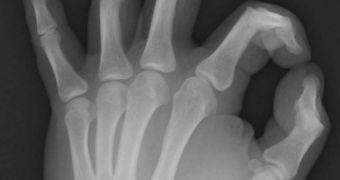X-ray imaging has been serving our medical and industrial needs for more than a century, but it has a series of disadvantages that makes its use rather obsolete. For example, it can only produce a 2D image of the probed sample, cannot diagnose certain diseases, such as breast cancer or Alzheimer, nor metal fatigue associated with corrosion and microscopic fissures. On the other hand, the dark-field X-ray is much more efficient at producing high clarity images at the same wavelengths usually used in typical medical procedures.
Unlike traditional X-ray techniques that produce radiographies by shinning the probed object with X-rays in order to collect the unabsorbed light, dark-field imaging captures the light scattered throughout the material, totally ignoring the remnant radiation. Nevertheless, such imaging techniques are expensive and the tools used are rather massive. For example, the PSI dark-field X-ray imaging facility uses a sophisticated optical device and a bulky synchrotron 300 meters in diameter, worth about 200 million U.S. dollars.
The scientists at Paul Scherrer Institute, in collaboration with the EPFL in Switzerland, have designed a dark-field X-ray imaging device which could quickly replace the century old X-ray machines, at relatively low costs. On top of the advantages posed by the enhanced clarity of the images, the dark-field X-ray imaging is able to measure bone density with increased sensitivity and can conduct exploration on soft tissue to detect cancer. Similarly to traditional X-ray probing, dark-field X-rays can penetrate through the mass of the material without damaging it in any way, and, owing to the unique light scattering capabilities, it can also differentiate between certain substances by identifying their crystalline structure, an extremely useful feature when trying to detect hazardous materials such as explosives in airports.
The newly designed dark-field X-ray imaging device uses an optical element in the form of nanostructured optical axis grating which works only in a single X-ray wavelength, making it highly effective. The nanostructures optical axis grating offers the user a much wider spectrum of frequencies than those traditionally used in X-ray imaging. The PSI team argues that, instead of replacing the whole X-ray equipment currently used in hospitals, the machines could get just an upgrade, replacing the optical elements of the old ones.

 14 DAY TRIAL //
14 DAY TRIAL // 
